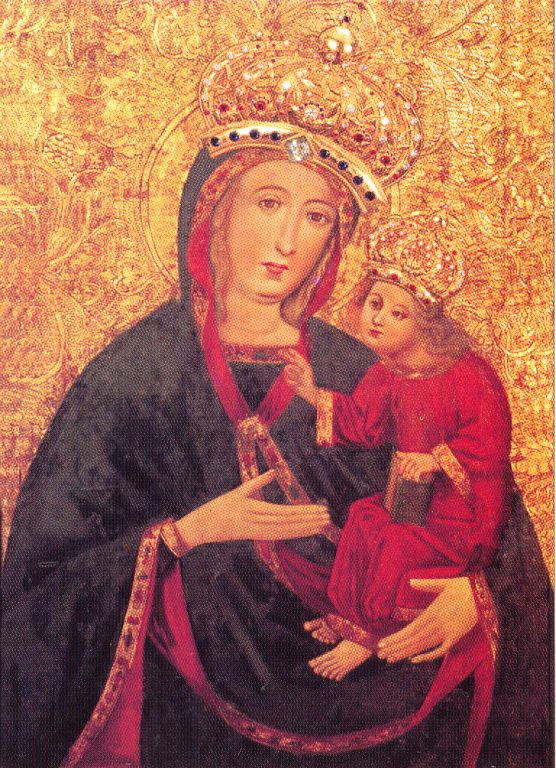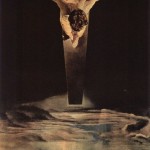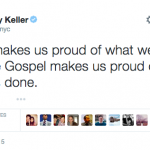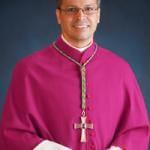In, I think, Atheist Delusions (my review here) David Bentley Hart makes the following argument: that all the destructive modern ideologies have one thing in common: that they view human nature as a technology that we can, and ought to, modify in order to bring about utopia. To Marxism, humanity is a social technology; to Nazism and eugenicism humanity is a racial/genetic technology; to hypercapitalism, man is a homo oeconomicus; transhumanism straightforwardly admits this (and read Hart on The Anti-Theology of the Body at least once a month); to postmodern expressive individualism humanity is [complete this sentence]. While Hart lauds the achievements of the Scientific Revolution, he also notes the sorcerer’s apprentice language that was often used by its ministers, like “putting nature on the rack” to extract its secrets, and notes that most of the proto-scientists were also alchemists fascinated by the occult, a clear indication (in his argument) that they were more interested in promethean mastery by any means than in science-qua-science or a dispassionate quest for knowledge, and it is only in retrospect that we look at them and say “Oh! They invented science! What geniuses! And here they did this alchemy stuff, that’s weird, but that’s something totally unrelated that we’re going to avoid mentioning mmkay.”
As with any Grand Narrative, it’s easy enough to poke holes in it if you want to, but leave that aside for a moment. Because when I think about this I can’t help but link it to one of the enduring mysteries of the recent epoch, which was the “rush” of Marian apparitions in the 19th and 20th century, and the 19th and 20th century definitions of Marian dogma by the Church.
If the modern heresies are really a coordinated assault on human nature, then what better response than to contemplate and put forward God’s masterpiece among His creatures, the one in whom human nature is most perfected by grace?
I can’t put it better than Mark Shea:
Significantly, the Holy Spirit saw fit to emphasize the Immaculate Conception at just the moment in world history where the dignity of the origins of the human person was coming under severe assault from materialist philosophies which saw the human person as a mere product of wind and weather (Darwin), of economic and political forces (Marx), as divided by race and class (Herbert Spencer), or as a creature driven solely by sex and powerless against unconscious forces (Freud). The definition of the dogma directly contradicts these unbiblical views of the human person.
So we come to 1950 and the definition of the Assumption. Why choose that moment to reiterate that ancient teaching? I believe it was because at that time the Church was witnessing the most colossal, systematic, and satanic assault on the dignity and particularly the destiny of the human person in the history of the world. Right smack in the middle of the century of genocide, totalitarianism, hedonism, materialism, mass propaganda and the worship of everything from sex to the state to science, the Church says, in this dogma, that the proper destiny of the human person is not Auschwitz, the Gulag, the Playboy Mansion, Costco, or the boob tube. It is Heaven. And Mary is, once again, the icon of that destiny, for what she has received from Christ we are also meant to receive.
That, in a nutshell, is what the Church is up to in Marian theology. The more I look at it, the more penetrating a reading of Scripture it appears to be. In particular, I am struck by how St. John calls us, not only to think in terms of Jesus, but to see ourselves associated with Mary. And so he includes the incident at the foot of the cross, not to give us details about Palestinian domestic arrangements for widows, but to make us see ourselves as included in “Woman, behold your son” and “Behold your mother.” I am also struck by how Revelation sees the Church as the “rest of her offspring”. I become more and more impressed by the fact that the best saints have found their sanctity enhanced, not diminished, by reverence for Our Lady (just look at John Paul II and Mother Teresa). I have come to believe the Church’s Marian theology is deeply and richly biblical. Indeed, I would argue that the reason the Church has been able to teach so brilliantly about the dignity of the human person both in Vatican II and in the writings of this Pope is that her Marian theology has prepared her like no other religious tradition to meet the onslaught of modernity and postmodernity against the dignity of the human person.
Think about it.
I don’t think I’m alone in thinking this. I find it significant that St Maximilian Kolbe–who was certainly in the frontlines of debased Modernity’s assault on the Church–also saw Marian piety as a deep fount of renewal.
Modernity says “You, individual person, are the final arbiter and criterion of truth.” Mary says “Fiat.”
Modernity says “Worship the state, for in it you have salvation.” Mary says “He casts the mighty from their thrones/and raises the lowly.”
Modernity says “Well, you have the rich, and you have the poor, and that’s just the way it’s gotta be.” Mary says “He fills the starving with good things/Sends the rich away empty” and appears to the poor and illiterate Bernadette Soubirous, not to some great theologian or archbishop.
Modernity says “You cannot flourish unless you’re sexually active.” Mary says “Watch me.”
Modernity says “You’re just a really clever ape.” Mary says “Look at the Queen of Heaven, and behold your lofty vocation of partaking the divine nature.”
Modernity says “Your nature is what you want it to be.” Mary says “Your nature is to accept grace; grace perfects nature; sinlessness makes me more human, not less.”
Modernity says “Rules are the enemy of freedom.” Mary says “Grace made me more free, not less.”
Modernity says “You’re a mind that inhabits a body.” Mary says “Behold, my assumed body.”
Modernity says “Faith or reason, you gotta choose.” Mary came to faith only after asking questions.
Modernity says “Women can only be a Stepford wife or Simone de Beauvoir.” Mary talks back to angels, bosses around the Incarnate Word, stays at the foot of the Cross when all the apostles have run away and provides leadership to the early Church in the obedience of faith.
Modernity says “Procreation is icky; virginity is weird and probably unhealthy.” Mary says “LOL.”
Modernity says “Religion is puritanical.” Mary says “Moar wine plz.”
Modernity says “If there is no transcendent horizon, then it all comes down to power.” Marian piety says “There is a transcendent horizon, and it is infinite beauty and peace.”
Modernity says “If there is a God, he has to be either distant or scary.” Marian piety says “God is so generous that he builds up the communion of saints to minister graces.”
Christianity is not a doctrine, let alone an ideology, it is the self-revelation of a Person and our response to Him. In the face of the destructive elements of the Modern challenge, the Church, guided by the Spirit, holds out not an ideology, but a person. Modern error is, ultimately, debased humanism: laudably putting the human at the center, but by disconnecting the human from the transcendent debasing the human. Marian humanism is full humanism–Christian humanism–, because it embodies the loftiness and nobility of our creaturely vocation.
—
Where does that leave the Church, in practice? I think what we need is an authentic Marian renewal.
Here are, in no particular order, and in an inchoate way, some ideas.
Mary as an apologetic asset.
If the Church has a vocation to hold out the figure of Mary front and center, One point that struck me in The Experience of God is that more philosophic-minded Christian apologists often don’t talk about miracles (with the exception of the Resurrection), but Hart notes that miracles are extremely troubling for the scientistic materialist worldview, since even one miracle out of the countless reported miracles is true, materialism is ipso facto false. It’s a good line of argument because even though I’m fully comfortable believing that 90%, 95%, even 99% of reports of miracles are errors or fabrications, it does take what can only be called a leap of faith to assert that fully 100% with absolutely no exceptions are false. Doctrinaire materialism is thus put face to face with its fideistic contradictions.
We shouldn’t be afraid to talk about, e.g., the apparitions and ensuing miracles at Lourdes. The evidence is extremely strong, and it vindicates not only “mere Christianity” but Full Christianity, i.e. the Holy Roman Church. If Marian intercession really is healing people at Lourdes (and it is) it becomes illogical to reject the claims that the Church makes about reality and itself.
Mary and the Theology of Beauty
Again riffing off of David Bentley Hart (and Balthasar and many others), if indeed a “theology of beauty” is a useful response to (post-)Modernity, then how can this eschew the figure of the Blessed Virgin Mother? Is it not her beauty and radiance that has drawn so many souls to Christ?
Deeper Mariology
Mariology underwent something of an upheaval at Vatican II. There were very laudable intentions: a “return”(?) to a more(?) kerygma-centered Christianity, a repudiation of the more kitschy and, frankly, sometimes heterodox, manifestations of Marian piety, a less-off-putting(?) ecumenical face. A lot of this is justifiable and necessary. But, as ever, the Spirit creates an opening for the Church, and the Church fumbles.
And, frankly, in this there was also an elitist disdain for uneducated rubes with their simple Marian piety, and this was enormously damaging. Balthasar at one point attributes the rise of Liberation Theology in Latin America to the transference of this fervor from sidelined Marian piety to social activism; and it is not hard to think that the encroachments of Protestantism in this continent are due to some form of ecclesial forgetting of our own patrimony.
Theologically, we’re looking for a “place” to “put” Mariology. The dominant tendency, opened up by Lumen Gentium and represented by towering figures such as Balthasar and Ratzinger, has been to join Mariology and ecclesiology at the hip. This is obviously welcome, and valid, and called upon by the Biblical narrative, since Mary represents the other type to read the Adam-Eve, YHWH-Israel, Christ-Church couples through. What is more, each time we ask Mary to pray for us, we manifest the communion of saints, and therefore God’s expansive generosity and non-competitive relationship towards us.
But that cannot be the only thing. First of all, the Bible won’t let us, because its Marian types are much broader.
Second of all, if I’m right that the Spirit calls on the Church to put forward Mary as a response to the challenge of Modern debased humanism, then it becomes vital to link Mariology and anthropology. Which only makes sense. Anthropology is ultimately Christology (and vice versa), and so is Mariology, since Mary is the Moon that reflects and points to the Sun of Christ.
Pope St John Paul II’s Magisterium, in the theology of the body and especially Mulieris Dignitatem does this, but I think there is still work to be done in this direction. In particular, drawing a more three-dimensional, more fully-rounded, therefore more Biblical portrait of the Blessed Mother will forbid us from lending too much credence to pietistic “Madonna” clichés, this forever-praying, mute, only-passive, glowing, hovering-above-the-ground figure that still haunts the Catholic imagination, and towards whom the Pope’s anthropologico-mariological considerations sometimes arguably wandered a bit too close.
Mary, first of all, exemplified the virtue of courage to a heroic degree: in her response to the angel, in her fiat itself, in her relationship to Joseph, her flight to Egypt, her behavior at Cana, her presence at the foot of the Cross. (Mary, Examplar of the Virtues–is that a devotion? If not, can we create it?) She was Jewish. She was poor. She was the source of the Gospel infancy narratives. She was a leader of the early Church. She was perpetually virgin, free from original sin, assumed bodily into Heaven, Queen of Heaven, but she was also these things. It is in this multilayered understanding of her life and in particular through her Magnificat (which reminds us that Marian piety is not pietism but leads to social justice), we can gain a better mystagogical understanding of the divinized humanity we are called to and that our Lord asks us to contemplate in His Blessed Mother.
All of this and more needs to find its place in our theology, in our evangelism, in our spirituality. There is work to be done.
Mary and God’s Purpose of Universal Reconciliation
A special concern for Marian apparitions and Marian piety is usually associated with the “conservative” wing of the Church. And a special concern for God’s intention to save all his creatures–explicitly attested to in Sacred Scripture–is usually associated with the “progressive” wing of the Church. And each has disdain for that aspect of the other.
So I find it amusing that it is Our Lady of Fatima who invites us to pray for the universal reconciliation of all creation to God, giving warrant and encouragement to what I believe must be the Christian attitude, the hope, though not the belief, that all will be saved. The Church exists precisely for this purpose–to save all souls–and prayer and intercession can and must be a key part in this effort. Why not make the Fatima Prayer a central part of the divine liturgy, as the prayers for the conversion of Russia–also a concern near to the Blessed Mother–once were?
We must not look at the timing as fortuitous. In this Marian counter-offensive against debased humanism, we must look at this prayer as a key weapon, and a sign that will lead us to victory. It has often been said that the doctrine of Hell becomes harder to justify after Auschwitz, and this is not without merit. The doctrine of Hell can only be presented within its classical understanding of a self-chosen state that God is obliged to respect despite his clear and profound intent to save all souls–an intent that we are called upon to hope to see realized.
Again, in God’s plan of universal salvation, ecclesial intercessory prayer is a necessary element, and therefore a particular concern of Mary as the chief intercessor.
A Marian-Biblical Renewal
The Church must do more to implement the Biblical renewal called for by Dei Verbum. But this Biblical renewal will not be a renewal if it is not authentic, if it is not faithful to what the Bible is.
The Bible, this symphony from the heart of the Church to the mind of the Church, is a text that we are invited to mystagogically, liturgically, and symphonically.
In the Bible, the New is concealed in the Old and the Old is revealed in the New; it is through the liturgy, particularly the Liturgy of the Hours, and its “curation” of Old and New Testament texts that the Spirit teaches and awakens us to these symphonic connections between Old and New. Lectio Divina allows the Spirit to awaken us to the spiritual meaning of the Bible. And the mind of the Church helps us to see the types that the Bible uses to testify to God’s Word, Jesus the Christ.
Within this, Marian piety, and especially the Rosary, has an absolutely essential role. The Church invites us to receive God’s preached and written Word; God invited Mary to receive His Incarnate Word. There has long been a connection between the rosary and the liturgy. As I’ve already written, because in the rosary we meditate on the great mysteries of the faith, praying the meditative and scriptural rosary is a great help into this Biblical mystagogy, since this meditation on the mystery helps us to hear those typological notes more clearly. A deeply Marian Church cannot ever forget that the Bible is a spiritual and typological text. A Biblical worldview will keep our Marian piety firmly rooted, and Mariology will make our Biblical mystagogy elevated.
—
These are just a few thoughts.
O Mary conceived without sin, pray for us who have recourse to thee.












